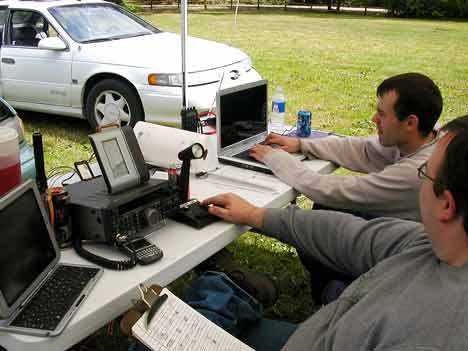One of the most important elements of emergency response to any disaster is the ability to communicate, and a group of hams are a key to keep this area talking.
That communication will be essential to coordinating an evacuation and to saving lives if the worst happens and the Green River Valley floods because of a weakened Howard Hanson Dam.
During a disaster, phone lines and cell phones often are the first systems to become overloaded and fail.
If an emergency hits and communication systems do fail, amateur radio operators, often known as hams, will be providing alternate emergency communication for fire, police city government and schools.
The ham radio clubs around the region are part of the Amateur Radio Emergency Services, or ARES.
Richard Green, who is a member of the Maple Valley Amateur Radio Club, said there are “ARES groups all over the county.”
When an emergency occurs, the Emergency Communication Center is activated at King County Sheriff’s Precinct 3 in Maple Valley and the ham operators in the ARES group are notified.
Green said the members of ARES and other hams practice every Tuesday communicating with each other and testing the system.
Green said during an emergency, amateur radio operators might be “sent to each school site to transmit information to the emergency control center, but we are not limited to schools; it could be any site where we are needed.”
The hams could use either handheld units or mobile units in their cars. There are hams who have both units.
“Some hams have the ability to rove (with a handheld) and communicate back to their vehicle,” Green said.
By sending the signal back to their cars, the hams would have a much wider range.
The Maple Valley club also has its own radio repeater, which takes a signal and increases the broadcast range.
Another advantage a ham has is the ability to easily switch to other frequencies if a repeater fails.
It is this flexibility that makes the amateur radio operators so valuable in the event of a widespread disaster.
According to Green, hams have radios ranging from $99 handheld units, mobile units in cars and high-frequency radios at home used for communicating around the world.
“In times of emergency everyone turns to a particular frequency,” Green said. “We are there if we are needed.”
Talk to us
Please share your story tips by emailing editor@kentreporter.com.
To share your opinion for publication, submit a letter through our website https://www.kentreporter.com/submit-letter/. Include your name, address and daytime phone number. (We’ll only publish your name and hometown.) Please keep letters to 300 words or less.

